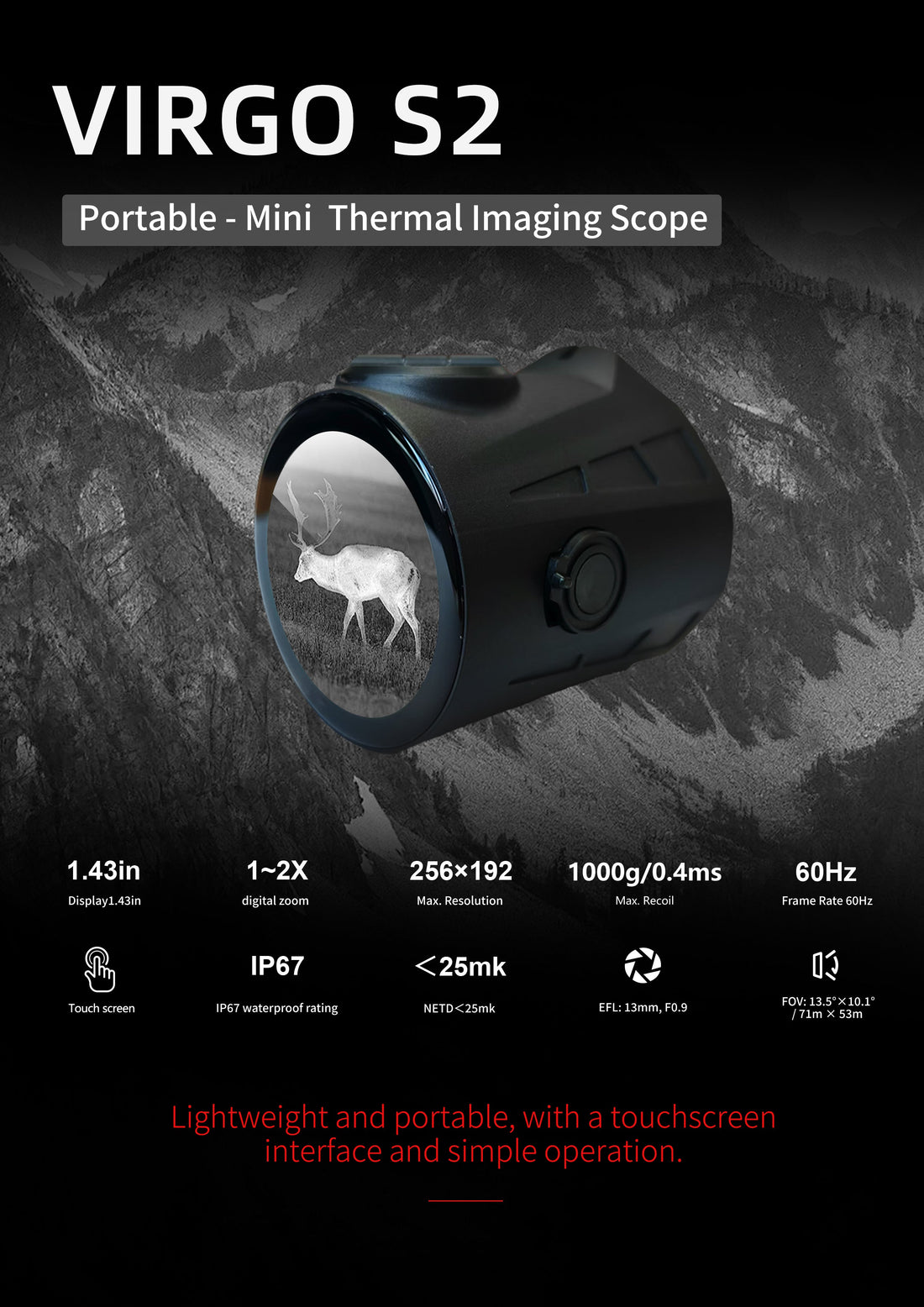
Market Demand for Pistol Thermal Imaging Scopes
Share
1. Core Market Demand Drivers
Tactical & Law Enforcement Needs: Law enforcement agencies, SWAT teams, and military units have a critical demand for pistol thermal imaging scopes. These devices enable target acquisition in zero-visibility environments (e.g., total darkness, dense fog, smoke, or foliage), supporting close-quarters combat (CQB) and urban operations where pistols are the primary sidearm.
Hunting Applications: Recreational and professional hunters increasingly seek thermal scopes for pistols, especially for nocturnal or low-light hunting (e.g., targeting hogs, coyotes, or other nocturnal game). Thermal imaging bypasses camouflage and terrain obstacles, improving hunting efficiency and safety by distinguishing game from non-targets (e.g., humans, livestock).
Home & Personal Defense: With growing concerns about home security, civilian users demand compact thermal scopes for pistols to enhance situational awareness at night. These scopes allow users to detect intruders in dark yards, hallways, or low-light rooms without relying on visible-light sources (which can reveal the user’s position).
Specialized Industrial & Security Tasks: Industries like private security, border patrol, and wildlife conservation use pistol-mounted thermal scopes for tasks such as perimeter patrol, anti-poaching surveillance, and search-and-rescue (SAR) operations—where quick, portable target detection is essential.
2. Key Factors Shaping Demand
Factor Impact on Market Demand
Technological Advancements Miniaturization (reducing scope size/weight for pistol compatibility) and lower power consumption have expanded usability, driving demand among civilian and tactical users.
Regulatory Policies In regions with relaxed regulations on thermal imaging devices (e.g., parts of the U.S.), civilian demand (hunting/self-defense) is higher; strict rules (e.g., some EU countries) limit demand to professional sectors.
Price Accessibility Declining costs of thermal sensors (e.g., uncooled microbolometers) have made pistol scopes more affordable, opening up the mid-range consumer market beyond high-end tactical users.
Environmental Adaptability Demand is stronger in regions with frequent low-light/harsh weather conditions (e.g., northern latitudes with long winters, dense forested areas, or coastal regions with heavy fog).
3. Market Segmentation by Demand Type
Professional Sector (High-End Demand): Focuses on durability, long detection range (typically 100–300 meters for pistols), and integration with tactical gear (e.g., night vision goggles). Key buyers: military, police, and private security firms.
Consumer Sector (Mid-to-Low-End Demand): Prioritizes compactness, ease of installation, and affordability. Target users: hunters, homeowners, and outdoor enthusiasts. Products in this segment often have shorter detection ranges (50–150 meters) but are lighter and more budget-friendly.
4. Emerging Demand Trends
Integration with Smart Features: Demand for scopes with Bluetooth/Wi-Fi connectivity (for sharing footage), digital reticles, and smartphone app control is rising, as users seek enhanced usability and data recording.
Compact & Lightweight Designs: Since pistols have limited rail space and require balanced handling, demand for ultra-compact thermal scopes (weighing under 200 grams) is growing to avoid compromising pistol maneuverability.
Multi-Spectral Capabilities: Some users (e.g., advanced hunters, tactical units) are demanding scopes that combine thermal imaging with visible-light or night vision modes, to adapt to varying light conditions.
